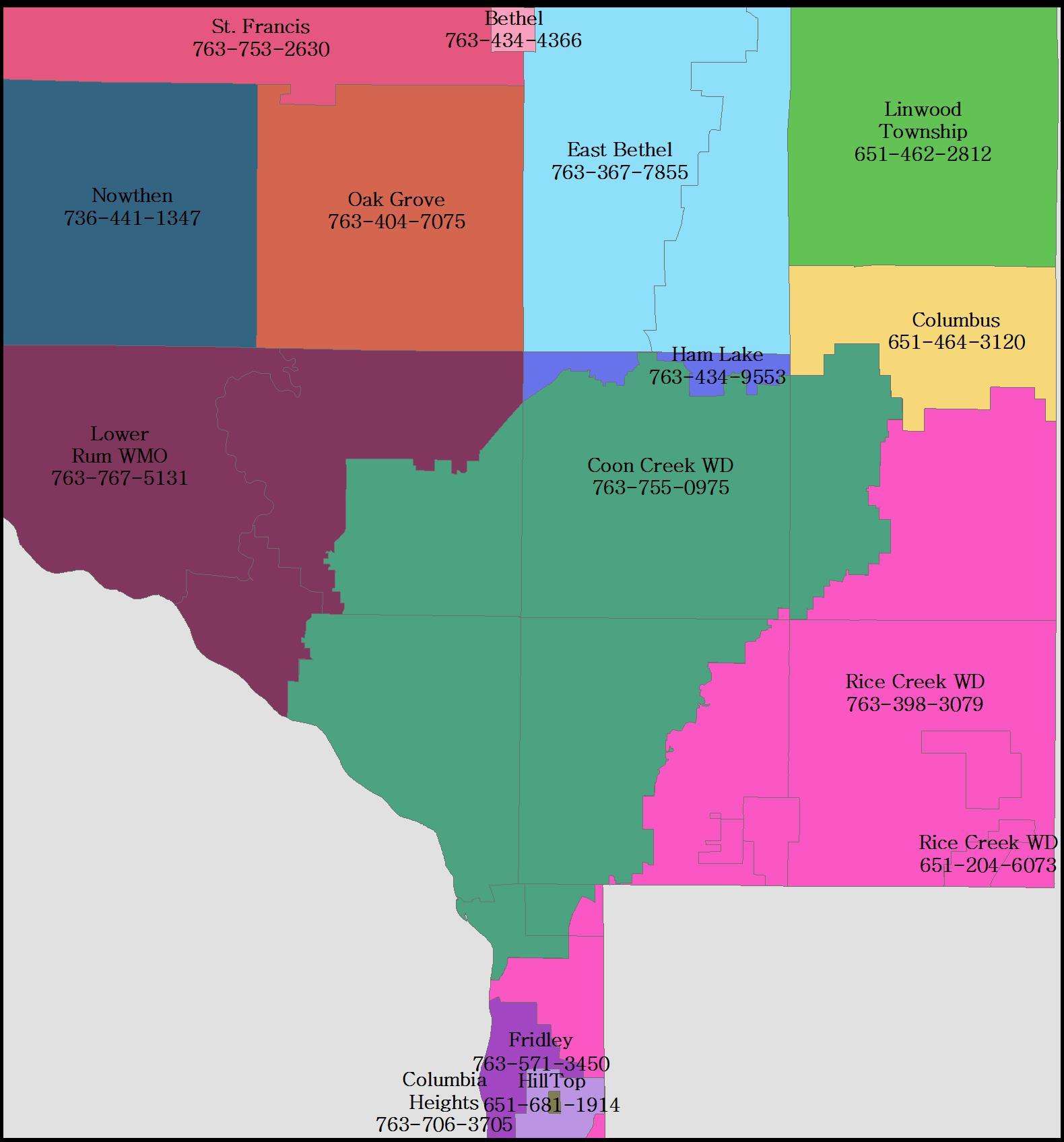Wetlands are regulated at the local, state, and federal level. These regulations generally require approvals for activities that would impact a wetland. Impacts consist of filling, draining, or excavating within a wetland. Impacting a wetland without appropriate approvals may result in enforcement procedures.
If you have project that might impact wetlands, contact your Local Government Unit (LGU) to identify any required approvals.
If you want general wetland information access the BWSR website.
Applicants proposing impacts to aquatic resources (wetlands, lakes, stream, etc.) should submit the joint application form found on the BWSR website.
Wetland Agency
The Minnesota Wetland Conservation Act (WCA) is administered by LGUs. Contact your LGU prior to starting any project that may impact a wetland. Click on your property location on the following map to identify the LGU in your area.
Since 1985, the Wetland Conservation provision of the federal farm bill (a.k.a., Swampbuster) requires all agricultural producers to protect the wetlands on the farms they own or operate in order to be eligible for U.S. Department of Agriculture farm program benefits. Contact your local NRCS office for more information regarding wetlands on agricultural lands.
The DNR regulates activities within lakes, wetlands, and streams identified on the state Public Water Inventory. Click here for public water permits information. The DNR also enforces WCA.
The Corps regulates work within waters of the U.S. based on its federal authority though Section 404 of the Clean Water Act and Section 10 of the Rivers and Harbors Act. The Corps generally has jurisdiction over rivers and streams, and waterbodies and wetlands that have a significant nexus to waters of the U.S. Most wetland impacts that require WCA LGU approval also require approval from the Corps. Click here for more information on the Corps Minnesota regulatory program.
WCA identifies SWCDs as source of technical advice for people and LGUs who have questions about wetlands and the interpretation of WCA. SWCDs also assist the DNR in the investigation of wetland violations, and in the preparation of wetland restoration/replacement orders. In Anoka County, contact the Anoka Conservation District wetland specialist for more information.
BWSR is the state soil and water conservation agency, and it administers programs that prevent sediment and nutrients from entering our lakes, rivers, and streams; enhance fish and wildlife habitat; and protect wetlands. BWSR’s role includes providing oversight for the administration of WCA. BWSR’s website provides a broad range of information regarding wetlands and wetland regulation in Minnesota.
n Minnesota, the MPCA administers Section 401 of the Clean Water Act. Section 401 water quality certification ensures that projects comply with state water quality standards. MPCA has pre-certified many of the general Section 404 permits that are issued by the Corps, including certain general permits for projects that affect wetlands. Project of a large scope or direct impact, however, may require project specific 401 certification through the MPCA. Among other things, MPCA also manages state water quality, including wetlands, the National Pollutant Discharge Elimination System (NPDES)/State Disposal System (SDS) program. NPDES/ SDS Permits are required from the MPCA for construction activities, including common plans of development, that disturb one acre or more of soil, disturb less than one acre of soil but the activity poses a risk to water resources. Click here for information about 401certification may and NPDES/SDS permits.
